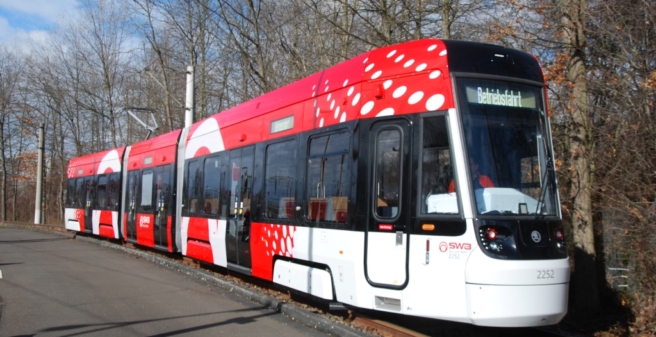
In August last year, the first railcar of the new low-floor tram generation for Bonn’s SWB of the type “Skoda ForCity Smart T 41” was subjected to equally hard and strict tests in the climatic channel in Vienna (UTM reported on 29 August 2022). And on 01 February 2023, the first of the new tram, no. 2252, was delivered in Bonn (UTM also reported on this).
On 10 March 2023, SWB presented this first of their new trams to the press and thus to the public.
At the end of April, the second of the new trams (Tw 2251) will be delivered in Bonn. It is still undergoing tests and test runs in Plzen, its birthplace. When asked when the next tramcars will be delivered to Bonn, SWB replied that all suppliers are currently facing delivery problems.
When asked what will happen to the 9451 to 9474 series trams currently in use on Bonn’s low-floor tram lines 61, 62 and 65 as soon as the new trams are in service, there is a remarkable answer. “We have several interested parties who want to take over our old trams. They all come from Poland.” Details will follow once published.
The total order for the new low-floor trams amounts to 28 trams. The contract, which was signed on 19 December 2019 in Bonn’s Stadtwerkehaus, was originally for only 26 trams, but SWB subsequently added two more. The new vehicles will only be used to replace the existing stock and to increase the frequency on the tram lines.
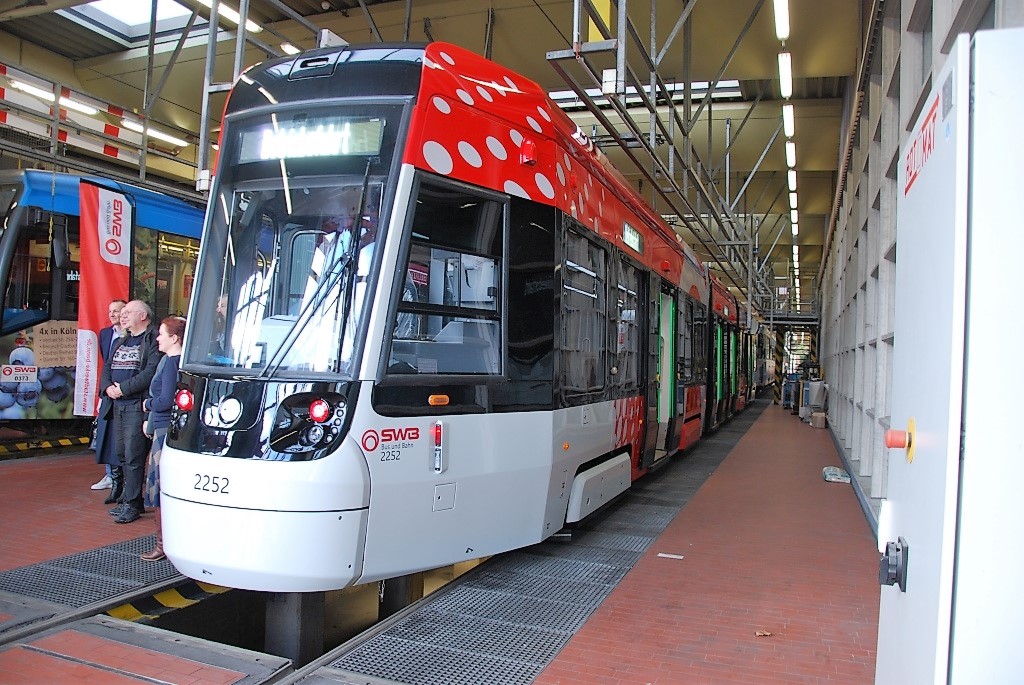
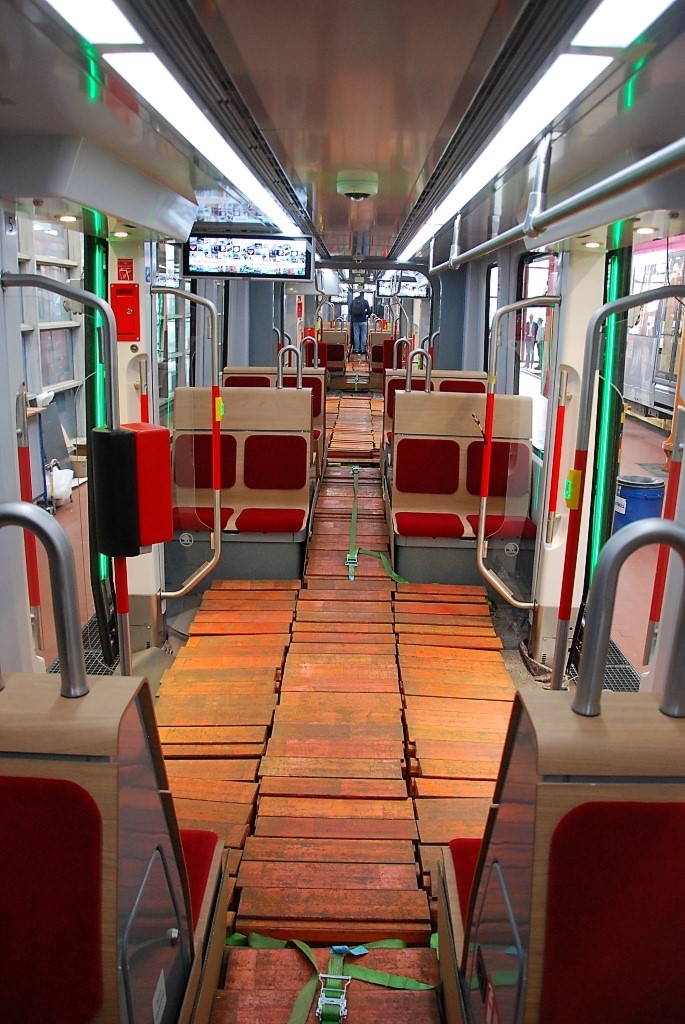
The presentation of the new trams also included a demonstration run at SWB’s Dransdorf depot. It is not yet permitted to take passengers down from the yard and onto the public line, because the new type of train has not yet been approved. Above all, the type approval of the technical supervisory authority (here in North Rhine-Westphalia the Regierungspräsidium Düsseldorf) is still missing.
Nevertheless, during the short nightly shutdown (only one hour), the new tramway is already going on test runs on its network. This is done “fully manned”. SWB rail operations manager Bernt Junker: “It is of course much easier to simulate full occupancy with passengers instead of loading and unloading 180 people on the train each night.” And so they spread small-cut former tram rails weighing a hefty 20 tonnes on the floor in the carriage. These are quite lavish packages, nicely painted in orange … The first small defects have already been found during these test runs. For example, a space element in front of the leading bogie scraped along the edge of a platform … SWB also found that the grab rails for standing passengers were not always anchored sufficiently securely in the roof. None of this is a tragedy, it can be easily remedied, and that is why such tests are carried out, to find such weak points and to remedy and avoid them in the series.
The question of how the new Skoda trains will do in the south subway at Bonn’s main railway station is an exciting one. The south subway has the tightest curve radii in the Bonn rail network and a veritable S-curve to boot. How will the Skoda-Bahn “cope” with this? SWB railway manager Bernt Junker: “That’s exactly why Skoda designed the railway as it stands before us today, with three carriage sections, the first and the last of which run on two bogies each, in which each axle is driven. While the somewhat shorter middle carriage section is a floating “sedan chair”, supported by the car bodies in front and behind it. This design should ensure trouble-free passage through the south subway.”
Bonn’s new Skoda trams operate under a voltage of 750 volts. They are 100% low-floor, and with their length of 30,600 mm they are about 2 metres longer than the tramcars still in use up to now. Their width is 2,400 mm. They are designed for a top speed of 80 km/h. As they are low-floor vehicles, they are unlikely to ever be used on the high-floor lines to Cologne (lines 16 and 18), so the opportunities to actually run at these speeds will be limited to the section on the right bank of the Rhine between Bonn-Beuel station and Römlinghoven. The new Skoda trams can carry 180 passengers, 60 of whom will find a seat.
What is striking in comparison to the previous trains are their emphatically narrow heads. But that is, after all, just pure optics.
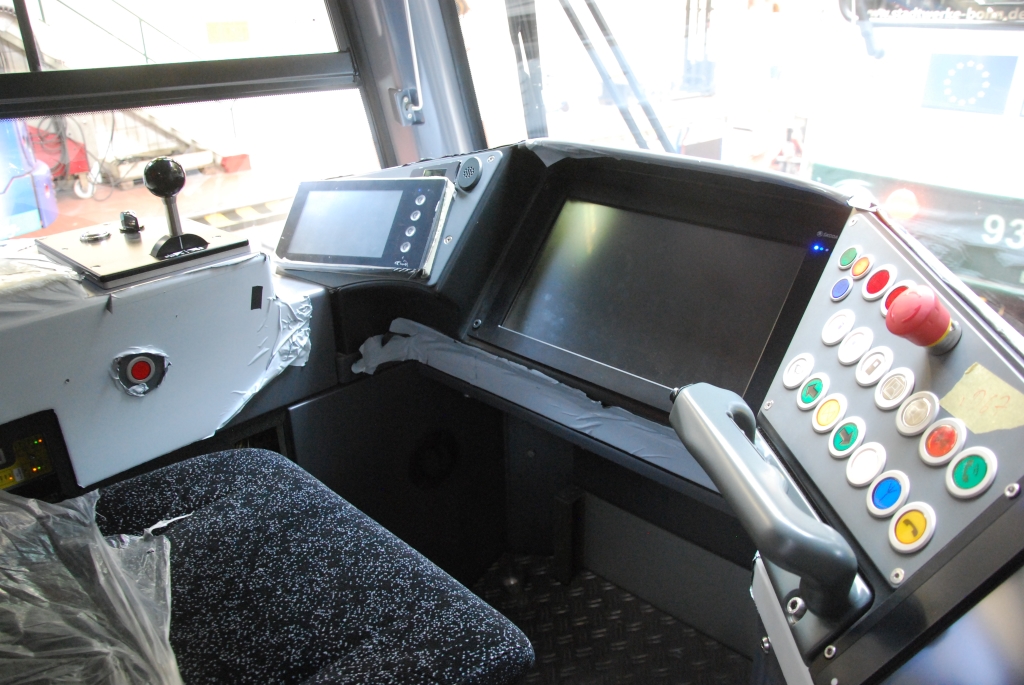
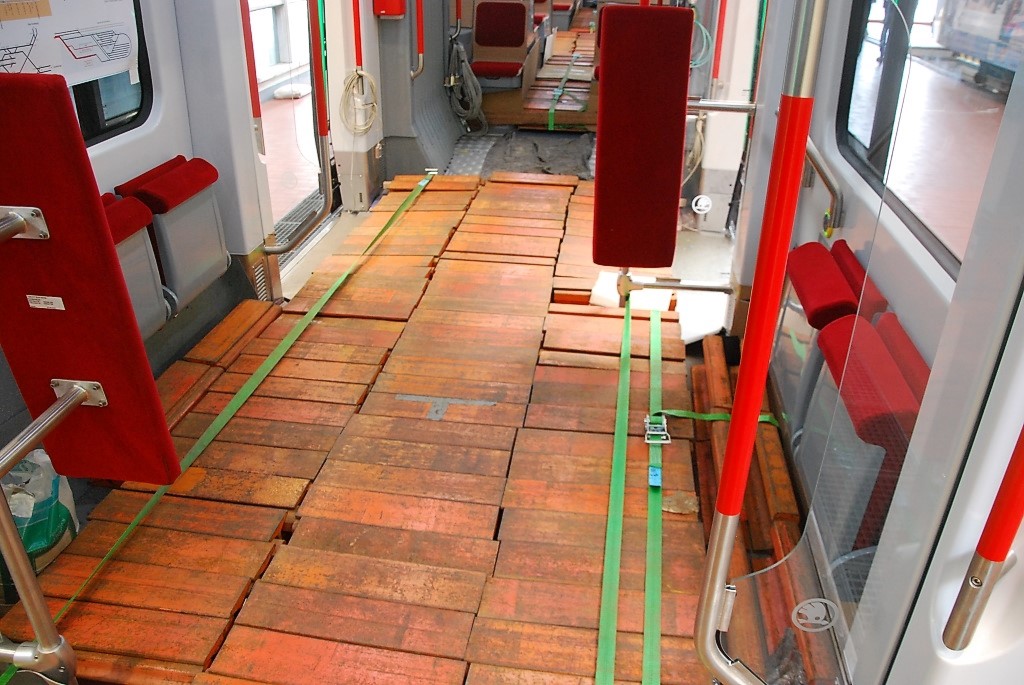
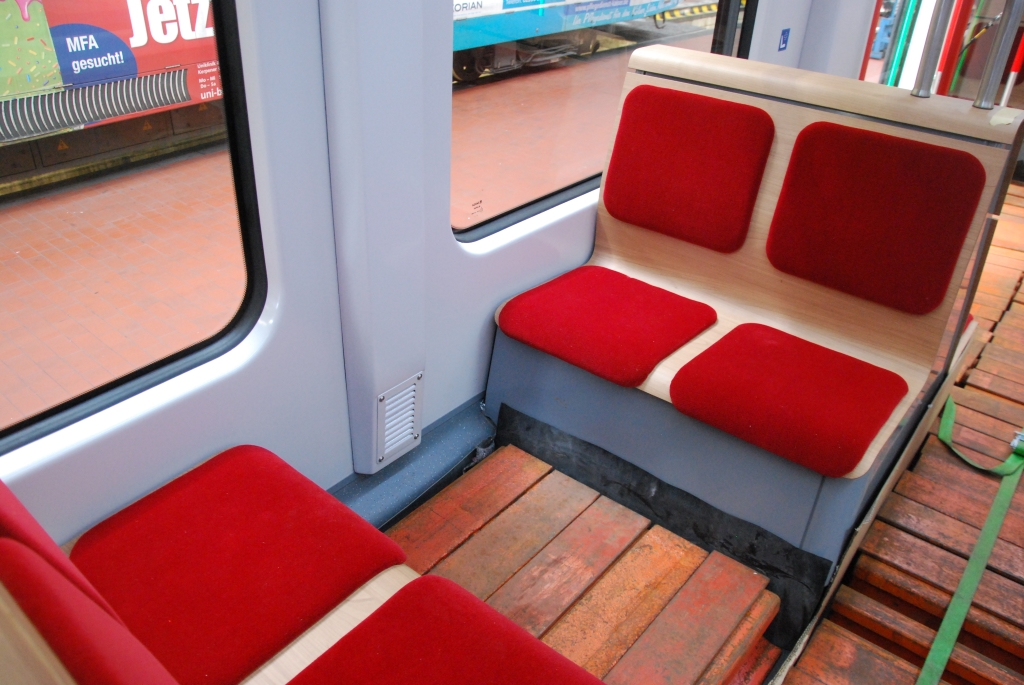
Marco Hundt, “Project Engineer West Region” of the Skoda Group, said at the presentation: “We are proud that our trams will soon be part of this beautiful and historically important city. Its unique character requires an individual approach to design. That is why we have carefully selected every element of the new tram, resulting in a very special vehicle. Among other things, we can highlight the very special environmentally friendly air-conditioning technology that uses the natural refrigerant CO2. This makes Bonn’s new trams the first in Germany to be equipped with this technology. Bogies increase ride comfort, reduce vibrations and noise and protect the tracks. Of course, we have also thought of people with limited mobility, families with prams and cyclists. The middle carriage section in particular has been designed with multi-purpose compartments for them. We are convinced that Bonn’s passengers will appreciate these new trams and enjoy using them for their daily journeys.”

Further reading:
https://www.urban-transport-magazine.com/en/swb-bonn-first-skoda-low-floor-tram-delivered-and-new-buses-from-man/
https://www.urban-transport-magazine.com/en/new-skoda-tram-for-bonn-thoroughly-tested-in-vienna/

